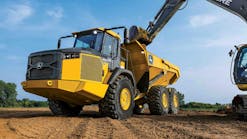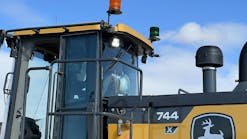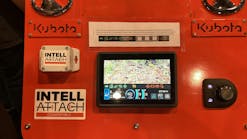Funding is a major obstacle for drone programs launching at large companies. Donovan Graves, director of client strategy at Skyward, has advice on securing approval.
“With budgets tight, drone advocates may struggle to get corporate approval to fly on the job site unless they can prove that drones can make an adequate and immediate return on investment,” Graves says. “Here’s the good news: In the construction and engineering industry, high-value use cases for drones aren’t hard to find.”
Some of the more obvious uses for drones at construction companies, Graves says, include speeding up data collection and reducing reliance on helicopters and planes. “But companies may be less likely to hone-in on other parts of the value equation. This includes things like new insights from better data, increased productivity, risk reduction, and lower workers’ comp costs.”
According to Graves, here five top value factors to consider as your engineering, construction, or architectural firm evaluates drone adoption or expansion.
1) New insights from drone data not captured before
“BIM and 3D modeling are vital in modern construction. To effectively use three-dimensional data, businesses need to capture accurate models at various stages of planning and construction,” Graves says. “Drones are well-suited for quickly modeling buildings and large areas. Using photogrammetry or LiDAR, drones can provide faster and more frequent modeling at a lower cost than current mapping methods.”
Some companies are using drones for up-close thermal inspections to spot structural defects and cracks. Others are looking into 3D location tracking of moving objects (such as people, equipment, and materials) on construction sites using a point cloud-vision hybrid approach.
Graves points out that Skyward customer Brasfield & Gorrie uses drones for BIM to generate virtual reality (VR) simulations of a building before construction actually begins. The technology makes them more efficient with prefabrication, better able to use their labor force across diverse markets, and more competitive.
2) Added productivity from drone workflows
“Often, drones can save a significant amount of time when replacing existing processes,” Graves says. “As an example, Brasfield & Gorrie has saved time and money by doing site measurements once, then subsequently using digital models instead of repeated field trips. Here’s what Hunter Cole, virtual design & construction coordinator for Brasfield & Gorrie, had to say about it.”
“We recently captured a point cloud of an existing structure in a remote location accessible only by boat. It was a four-hour drive and a one-hour boat ride to reach the site,” Cole says. “At that point, we were able to give the project team back at headquarters virtual access to the site. So instead of making a long trip to take some quick measurements, we can now do that in the point cloud that was generated from the drone.”
Over time, drone programs can expand with more use cases to derive even greater value. A drone program that begins with inspections may later grow to help with inventory management and 3D modeling.
“Construction giant Hensel Phelps was using helicopter flights at $14,000 to $20,000 per flight to capture aerial video of their projects,” Graves says.” Now they’re using drones at a fraction of the cost, and they’ve expanded to other uses such as photogrammetry, site monitoring, and marketing material.”
3) Performing risky jobs with drones for improved worker safety
According to OSHA, one in five worker deaths in private industry in 2019 were in construction—a total of over 1,000 deaths. Drones can help improve job site safety by taking the place of humans for certain hazardous tasks, like:
- Inspections of asset at dangerous heights
- Exploration of areas containing hazardous materials, temperatures, or gasses
- Identifying electrical hazards & utility lines.
Having drones perform tasks like these can reduce incidents from OSHA’s “Fatal Four” construction hazards: falls, struck by objects, electrocutions, and caught in/between.
“Moss & Associates, an ENR Top 100 Contractor, launched a drone program focused on safety and consistent standards,” Graves says. “Moss chose Skyward’s Program Start Package to help them fast-track their drone program to success. From standard operating procedures to on-site training, Skyward helped Moss launch a safety-conscious drone program in a matter of weeks. Today, Moss continues to use drones to improve workplace safety and produce great results, and they manage their program in Skyward.”
4) Fewer workers’ comp claims
OSHA estimates that employers pay almost $1 billion per week for direct workers’ compensation costs alone, Graves points out. This includes workers’ compensation payments, medical expenses, and legal services. Then there are the indirect costs:
- Training replacement employees
- Job transfers or restrictions
- Accident investigation and implementation of corrective measures
- Lost productivity
- Repairs of damaged equipment and property
- Lower employee morale.
“Drones can improve worker safety,” Graves says. “This, in turn, can decrease the frequency and severity of onsite incidents and saves construction companies significant worker’s comp costs.”
5) Faster, richer results with connected drones and 5G
As 5G wireless networks continue to be built out, connected drones have the potential to unlock still more new capabilities. Virtual reality applications are emerging, like next-generation inspections and monitoring movement of resources. Capabilities like these stand to benefit from the power of Verizon’s 5G Ultra Wideband network, Graves adds, which can offer:
- Low latency, potentially allowing control of aircraft from miles away in near real time
- Rapid data transfer, enabling transmission of high volumes of data
- Near real-time analytics during flight with mobile edge computing (MEC)
- Up to a million connected devices per square kilometer.
“Construction and engineering firms were among the earliest adopters of drone technology. We expect that they’ll continue to lead the charge for new use cases that leverage faster mobile networks, edge computing, AI, and machine learning. And as they do, they should see drones delivering an increasing amount of value across the industry,” Graves says.
Source: Skyward





